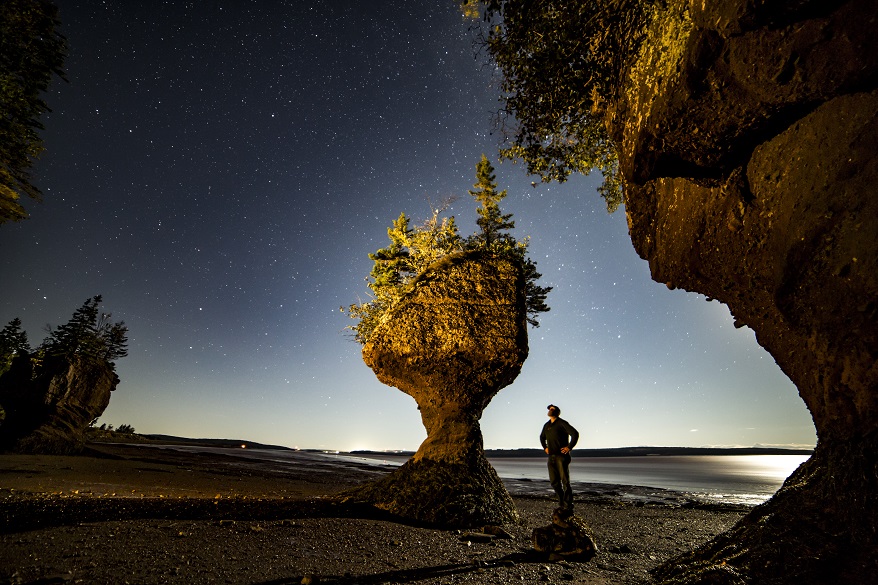
Dark Sky Reserves in North America
Between them, the US and Canada boast more than 50 accredited Dark Sky Parks and Reserves; wilderness areas where light pollution is controlled and limited so that the true beauty of the night sky can be appreciated, making for some unforgettable memories and enviable photographs.
We’d love to tell you about some of our favourites …
Canyonlands National Park, Utah
Canyonlands National Park was designated a gold tier Dark Sky Park in 2015, joining the 4 other ‘Mighty Five’ national parks in the state: Arches, Bryce Canyon, Capitol Reef and Zion. Attend night sky ranger programs to learn more about the stars you’ll see and even look through a telescope to get a better look.
Big Bend National Park, Texas
Big Bend, in western Texas and close to the Mexico border, encompasses approximately 800,000 acres of the Chihuahuan Desert. Here, you’ll likely encounter few fellow tourists and even less light pollution. If you’d rather not explore alone, join a guided moonlight walk with a park ranger.
Death Valley National Park, California & Nevada
America’s hottest and driest national park sits across the California-Nevada state line. Not only does exploring the park at night make for a cooler experience, but it also means the opportunity to see thousands of stars with the naked eye. It is recommended that visiting during a new moon will enhance your visit even further and there is a Dark Sky Festival held here every spring.
Grand Canyon National Park, Arizona
Few destinations evoke imagery quite like the Grand Canyon. While the views during the day are extraordinary, the dark skies make it well worth looking up too. You may be lucky enough to see a meteor shower, star cloud or even catch a glimpse of Saturn or Jupiter.
Great Sand Dunes National Park, Colorado
Great Sand Dunes is affectionally known as America’s sandbox, but much of the park’s beauty is seen after dark. The neighbouring Sangre de Cristo mountains shelter the park from nearby light pollution, making near perfect conditions for viewing up to 15,000 stars.
Joshua Tree National Park, California
Joshua Tree’s distance from any major city means that it is one of the best places in the world to go stargazing. For the best conditions, visit between April and September, make your way to the east of the park (where the closest source of light pollution, Phoenix, is about 300 miles away), and try to visit alongside a new moon.
Waterton-Glacier International Peace Park, Alberta & Montana
Waterton-Glacier is special, not just for its dark sky status but also because the park straddles an international border between Montana in the US and Alberta in Canada. The best spots for stargazing, according to park rangers, include Cameron Bay, which is just walking distance from town, the Red Rock Parkway, and the Bison Paddock Overlook, which shows off the prairie’s skies in all their glory.
Terra Nova National Park, Newfoundland
Terra Nova became Canada’s 20th Dark Sky Preserve in 2018 and Parks Canada recommends four key destinations within the park for the best views. Sandy Pond is thought to have the darkest skies in the area; Ochre Hill was originally used as a fire-watch station and is now a great place for panoramic views, Blue Hill is the tallest point in the park and at the Visitor Centre you can get a great view of the stars reflected in the water of Newman Sound.
Jasper National Park, Alberta
At 11,000 square kilometres, Jasper is the second largest Dark Sky Reserve in the world. It hosts the Annual Jasper Dark Sky Festival every October, which includes talks from prominent star-gazers and events including ‘Symphony Under the Stars’.
Fundy National Park, New Brunswick
As well as being a certified Dark Sky area, Fundy National Park is known for having the highest tides in the world. To combine the beauty of the tides with the night sky, try to visit during the first or last quarter of the moon to really appreciate the movement of the water at night.
Kejimkujik National Park, Nova Scotia
At Kejimkujik National Park, join a telescope stargazing session if you visit in summer, at a purpose-built aboriginal ‘Sky Circle’, enhancing your appreciation of the night sky. As well as the stunning skies, the darkness will also mean that nocturnal animals such as bears and coyotes aren’t bothered by human lights, so will be much more active than in other, more polluted areas.
If you would love to visit any of these amazing dark sky areas with your family and friends, please contact us, we would love to help you plan an unforgettable star-gazing experience.
